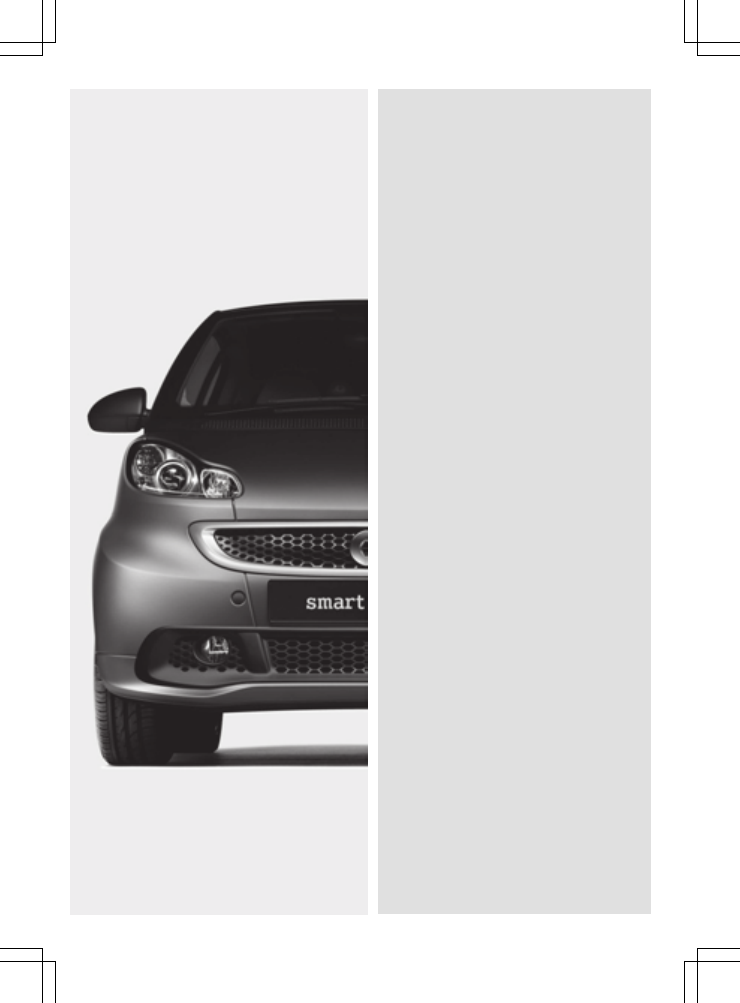Smart fortwo coupe and smart fortwo cabriolet electric drive (2015). Manual - part 2

>>
Safety.
Occupant safety ................................ 30
Panic alarm ..................................... 45
Driving safety systems ....................... 46
Anti-theft systems ............................ 48